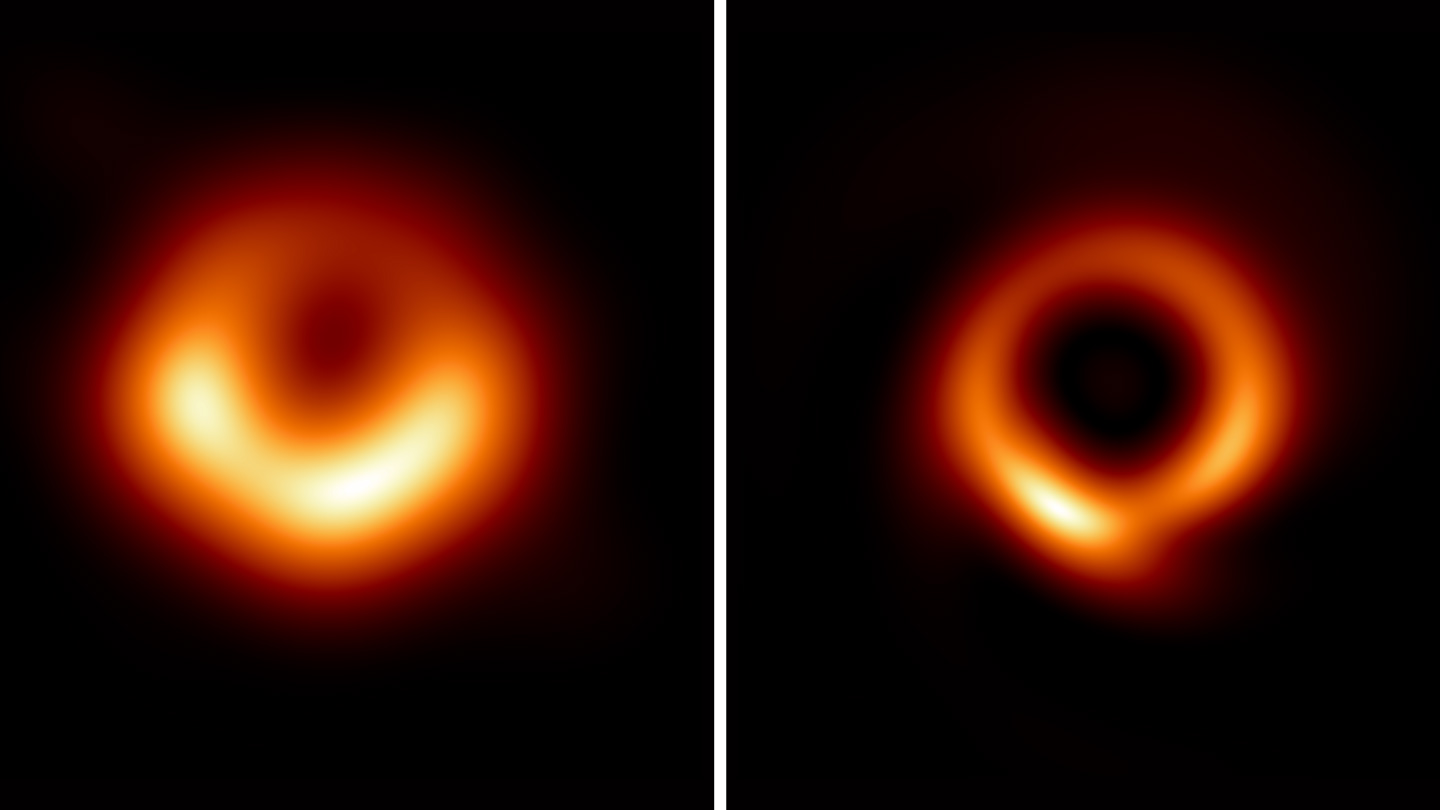The first black hole portrait got sharper thanks to machine learning |
 |
| Scientists used machine learning to create a sharper image of the supermassive black hole in the galaxy M87 (right), compared with the original image (left).L. Medeiros 2023By Emily ConoverIf the first image of a black hole looked like a fuzzy doughnut, this one is a thin onion ring.Using a machine learning technique, scientists have sharpened the portrait of the supermassive black hole at the center of galaxy M87, revealing a thinner halo of glowing gas than seen previously.In 2019, scientists with the Event Horizon Telescope unveiled an image of M87’s black hole (). The picture was the first ever taken of a black hole and showed a blurry orange ring of swirling gas silhouetted by the dark behemoth. The new ring’s thickness is half that of the original, despite being based on the same data, researchers report April 13 in the .The Event Horizon Telescope takes data using a network of telescopes across the globe. But that technique leaves holes in the data. “Since we can’t just cover the entire Earth in telescopes, what that means is that there is some missing information,” says astrophysicist Lia Medeiros of the Institute for Advanced Study in Princeton, N.J. “We need to have an algorithm that can fill in those gaps.”Previous analyses had used certain assumptions to fill in those gaps, such as preferring an image that is smooth. But the new technique uses machine learning to fill in those gaps based on over 30,000 simulated images of matter swirling around a black hole, creating a sharper image.In the future, this technique could help scientists get a better handle on the black hole’s mass and perform improved tests of gravity and other studies of black hole physics. |
Apr 14th, 2023 |
| source |